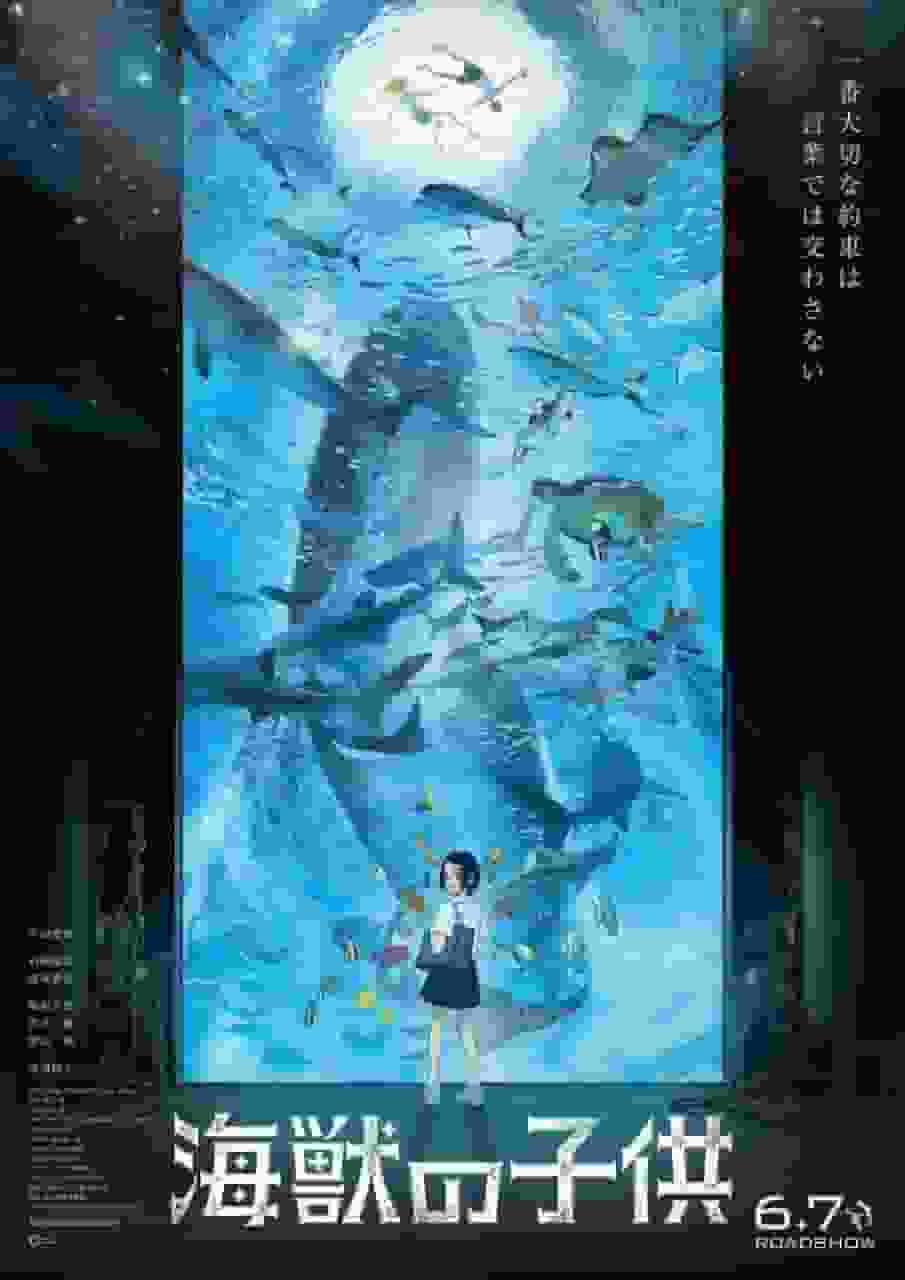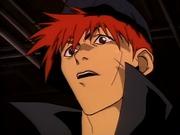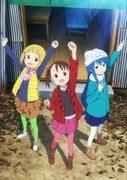Gegege no Kitaro Season 5 Episode 17: The appeal and evaluation of the 2000s

Gegege no Kitaro Season 5 - Revisiting the world of monstersGegege no Kitaro is an anime series based on the original work by Shigeru Mizuki, and its fifth season aired from 2007 to 2009. The series follows Kitaro and his friends as they solve various cases in a world where the world of monsters and the world of humans intersect. The fifth season is a long-running series with 100 episodes, and through many episodes, it depicts the charm of monsters and their coexistence with humans. Story and ThemesThe story of the fifth season revolves around Kitaro's struggle to solve the wishes of humans that arrive in the Yokai Post. Each episode depicts the process of solving incidents caused by the Yokai and mysterious phenomena that occur in the human world. Particularly impressive is the way it delves deep into the relationship between Yokai and humans. Kitaro is kind to both Yokai and humans, and tries to solve problems that arise between the two. This can be said to be a continuation of the theme of "coexistence between humans and Yokai" from Shigeru Mizuki's original work. The fifth season also introduces a new element, the "Forty-Seven Japanese Yokai Ronin," in which yokai from all over Japan appear. This highlights the individuality of the yokai with their rich regional flavor, providing viewers with fresh surprises. In addition, overseas yokai, such as Western and Southern yokai, also appear, introducing diverse yokai cultures. These elements emphasize the "diversity and coexistence of yokai," a consistent theme throughout the series. Characters and castTakayama Minami, who plays Kitaro, perfectly expresses Kitaro's bravery and kindness. In particular, her voice conveys strength and determination in the scenes where Kitaro faces difficulties. Tanonaka Isamu, who plays Medama Oyaji, firmly plays the role of Kitaro's mentor, giving viewers a sense of security. Konno Hiromi, who plays Nekomusume, balances cuteness with power in battle scenes, bringing out the charm of the character. The cast is also full of other unique characters, including Takagi Wataru as Ratman and Yamamoto Keiko as Sand-Throwing Granny. In particular, Ratman's role as a troublemaker and the balance between strictness and kindness of Sand-Throwing Granny are perfectly portrayed. The drama woven by these characters has the power to draw viewers in. Production and staffThe fifth season was produced by Toei Animation and directed by Kaizawa Yukio. The series was composed by Hasegawa Keiichi and Sanjo Riku, and the music was composed by Horii Katsumi and Yokoyama Seiji. The character design and general animation director was Ueno Ken, and the art design was by Yoshida Tomoko. This team of staff worked together to faithfully recreate the worldview of the original work while adding new appeal. In particular, the character designs are carefully designed to retain the image of the original work, while adding the unique movements and expressions of animation to bring out the characters' charm to the fullest. Additionally, the music plays an important role in enhancing the atmosphere of each episode, and has the effect of evoking the emotions of the viewer. Episodes and subtitlesThe fifth season is a long-running series with 100 episodes in total, and while each episode has its own independent story, it has a consistent theme throughout. Particularly memorable episodes include "The Town Where Yokai Live," "Bibibi!! Ratman!" and "Naruki! Nurarihyon, the Archenemy." In these episodes, Kitaro and his friends are shown confronting various yokai and solving cases. In addition, in the episodes of "The 47 Japanese Yokai Ronin," yokai from all over Japan appear, and stories with a strong regional flavor unfold. This allows viewers to experience yokai culture from all over Japan, which is sure to pique their interest. Furthermore, in episodes such as "Landing! Menacing Western Yokai" and "Southern Yokai Land in Japan!!," yokai from overseas appear, allowing viewers to enjoy the world of yokai from a new perspective. Theme songs and musicThe opening theme for the fifth season was "Gegege no Kitaro" sung by Shigeru Izumiya and "Gegege no Kitaro" sung by The 50 Kaitenz. These songs have the effect of enlivening the worldview of the animation while continuing the atmosphere of the original work. The ending themes were "Urameshi Night (Ya)", "Yokai Yokocho Gegege Bushi", "Kakumeinouta ~Diggin'~", "Summer Demon", "Star Fruits", and "Crescent Moon and North Wind", and enhanced the atmosphere of each episode. In particular, "Urameshi Ya" is a song that leaves a lasting impression on viewers, with Hidekazu Nagai's powerful singing voice. Also, Junichi Suwabe's humorous singing of "Yokai Yokocho Gegege Bushi" has a soothing effect on viewers. These songs are important elements that liven up the atmosphere of the entire series. Related works and media mix"GeGeGe no Kitaro" has four series, with the fifth being its sequel. There are also other related works such as the theatrical version "GeGeGe no Kitaro: Japan Explodes!!," "GeGeGe no Kitaro: Yokai JAPAN Rally 3D," "GeGeGe no Kitaro: Karan-Korron 3D Theater," and "Hakaba Kitaro." These works further expand the worldview of the original work, providing new entertainment for viewers. As a media mix, it has been developed in various forms such as manga, novels, and games, making it a series that fans can enjoy from many different angles. In particular, many of the games involve controlling Kitaro and his friends to solve cases, providing viewers with a new experience. These media mixes have the effect of further enhancing the appeal of the series as a whole. Ratings and Recommendations"GeGeGe no Kitaro Season 5" faithfully reproduces the worldview of the original work while adding new elements to provide fresh surprises to viewers. In particular, the theme of the coexistence of monsters and humans carries an important message for modern society, and has the effect of making viewers think deeply. In addition, the personalities and drama of the characters have the power to draw viewers in, making it enjoyable enough to be a long-running series. This series can be enjoyed by a wide range of people, from children to adults, and is especially recommended for those who are interested in yokai and traditional Japanese culture. It is also a series that fans of the original work can discover new charms in, so we highly recommend watching it. By revisiting the world of yokai, viewers will be able to experience new adventures and excitement. |
<<: The appeal and evaluation of "Tengen Toppa Gurren Lagann": A masterpiece of passionate anime
>>: The appeal and reviews of Robby and Kerorobby: Exploring the deep world of anime
Recommend
New stills from "Jurassic World 3" are released and How to Train Your Dragon is here again!
Recently, foreign media released new stills of &q...
The appeal and reviews of "Blue Flame": A thorough analysis of the deep story and the appeal of the characters
A comprehensive review and recommendation of Blue...
Hiromu Arakawa's masterpiece "Silver Spoon" resumes serialization after 1 and a half years! Officially heading towards the final chapter
"Silver Spoon", a masterpiece by Japane...
The movie "Eight Hundred" is scheduled to be released in North America and other places on August 28
Recently, CMC Films, the overseas distributor of ...
Beautiful star Nozomi Sasaki recently shared her Snow White cosplay photo, netizens exclaimed that it was more beautiful than the original
Japanese actress Nozomi Sasaki, who was once rank...
The appeal and reputation of Little Witch Megu-chan: Reevaluating the nostalgic magical girl anime
Little Witch Megu-chan - A pioneer of magical gir...
Unbreakable Machine-Doll review: Charming characters and a deep story
Unbreakable Machine-Doll: A fascinating anime dep...
"Slam Dunk" new animated film box office exceeded 3 billion and topped the list for two consecutive weeks
The youth and memories of loyal fans, the new Sla...
Two actors killed in car accident on set of Netflix series
According to foreign media reports, last Thursday...
The live-action movie "Dungeons & Dragons" will be released on March 31 next year
The release date of the movie adapted from the fa...
YouYaoQi Comics has officially shut down and has been merged into Bilibili
According to Fast Technology today (December 31),...
Marvel's Loki TV series new trailer: Tom Hiddleston winks and flirts with the stewardess
Marvel's new drama "Loki" released ...
Tetsujin 28: The appeal and reputation of the classic robot anime
Tetsujin 28 - Tetsujin 28-go - ■ Public Media TV ...
ONE PIECE: The Cursed Holy Sword - A deep review of the fascinating story and characters
"ONE PIECE: The Cursed Holy Sword" - A ...
Key officially announced: "Summer Pockets" will be adapted into an animation
Key has officially announced that its visual nove...









